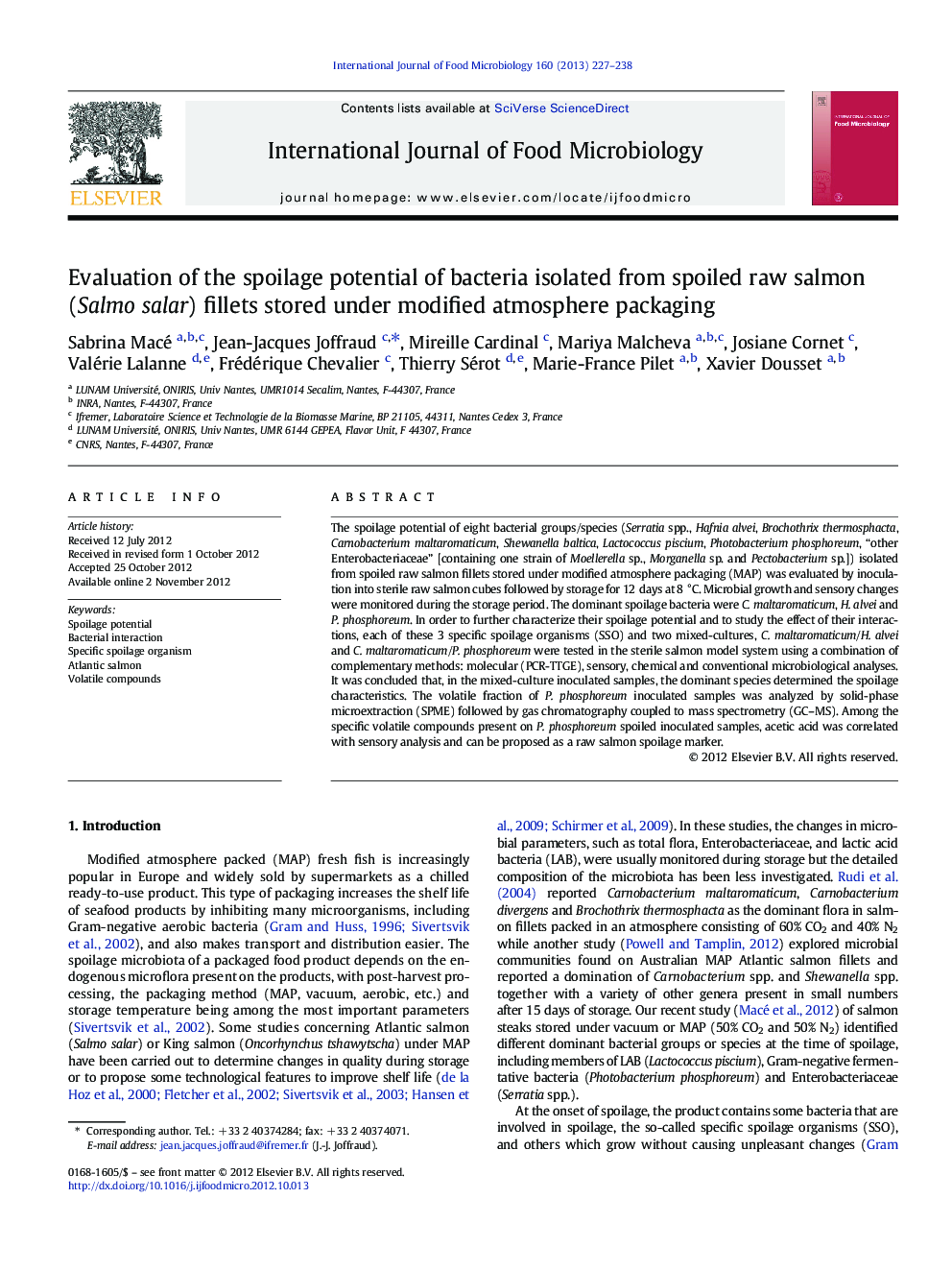| Article ID | Journal | Published Year | Pages | File Type |
|---|---|---|---|---|
| 4367295 | International Journal of Food Microbiology | 2013 | 12 Pages |
The spoilage potential of eight bacterial groups/species (Serratia spp., Hafnia alvei, Brochothrix thermosphacta, Carnobacterium maltaromaticum, Shewanella baltica, Lactococcus piscium, Photobacterium phosphoreum, “other Enterobacteriaceae” [containing one strain of Moellerella sp., Morganella sp. and Pectobacterium sp.]) isolated from spoiled raw salmon fillets stored under modified atmosphere packaging (MAP) was evaluated by inoculation into sterile raw salmon cubes followed by storage for 12 days at 8 °C. Microbial growth and sensory changes were monitored during the storage period. The dominant spoilage bacteria were C. maltaromaticum, H. alvei and P. phosphoreum. In order to further characterize their spoilage potential and to study the effect of their interactions, each of these 3 specific spoilage organisms (SSO) and two mixed-cultures, C. maltaromaticum/H. alvei and C. maltaromaticum/P. phosphoreum were tested in the sterile salmon model system using a combination of complementary methods: molecular (PCR-TTGE), sensory, chemical and conventional microbiological analyses. It was concluded that, in the mixed-culture inoculated samples, the dominant species determined the spoilage characteristics. The volatile fraction of P. phosphoreum inoculated samples was analyzed by solid-phase microextraction (SPME) followed by gas chromatography coupled to mass spectrometry (GC–MS). Among the specific volatile compounds present on P. phosphoreum spoiled inoculated samples, acetic acid was correlated with sensory analysis and can be proposed as a raw salmon spoilage marker.
► Spoilage potential of 8 bacterial groups isolated from spoiled salmon was evaluated. ► Specific spoilage organisms were identified among these bacterial groups. ► Spoilage abilities and bacterial interactions of 3 dominant spoilers were further characterized. ► On mixed-culture inoculated samples, spoilage characteristics are imposed by the dominant species.
